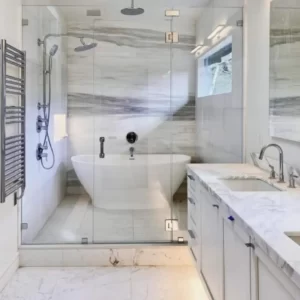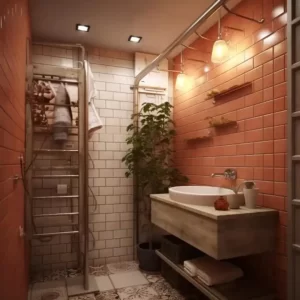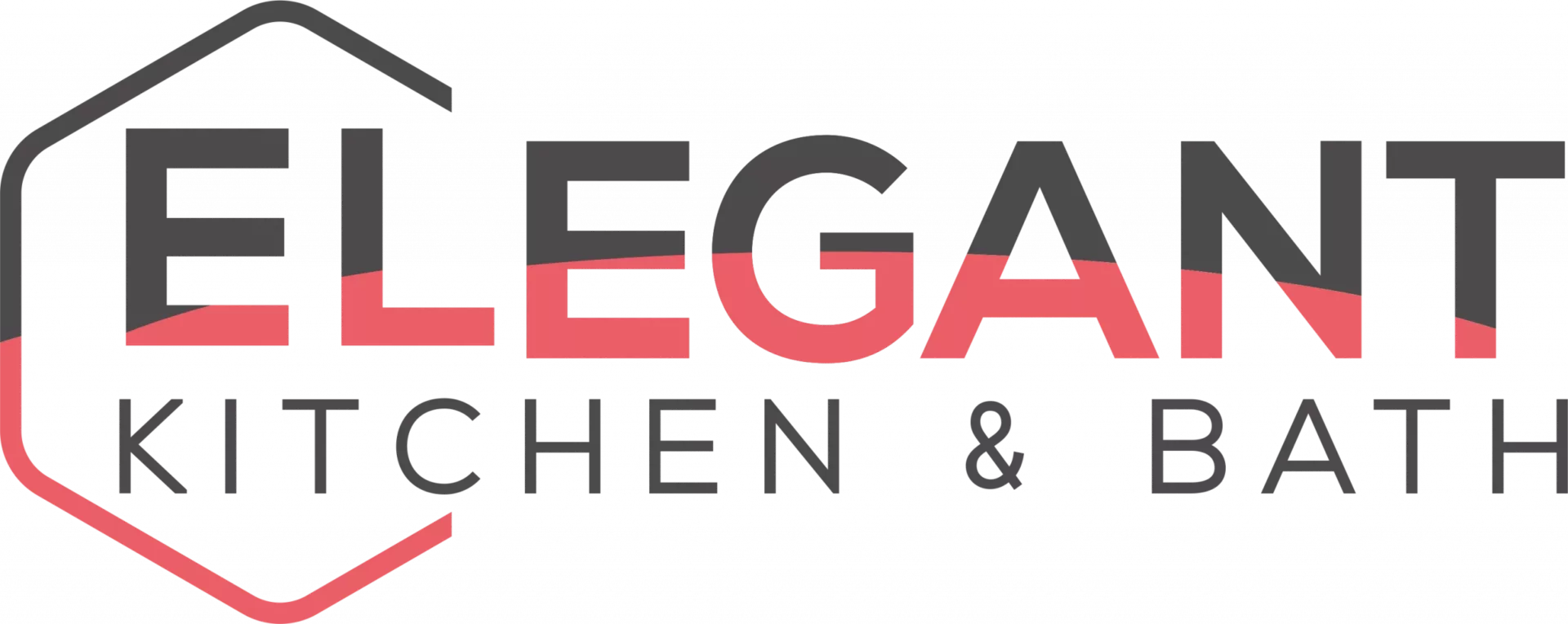The battle between modern and traditional bathroom designs is a tale of two styles, each with its charm and philosophy.
Modern design often captivates with its sleek, minimalistic elements and cutting-edge amenities, providing a sanctuary that breathes contemporary elegance into the home.
On the other side of the spectrum stands traditional design, where the warmth of classic fixtures, rich wood trims, and timeless motifs create a space that exudes comfort and familiarity.
Those looking to embark on a bathroom remodel face the challenging yet creative decision of which path to follow.
Keep reading as we delve into the nuances of both styles, revealing the advantages and inconveniences they bring to the realm of home improvement.
Key Takeaways
- Modern Bathroom Design Emphasizes Minimalism, Clean Lines, and Advanced Technology for a Sleek Look
- Traditional Bathroom Design Treasures Detail, Comfort, and a Classic Aesthetic, Often Incorporating Ornamental Elements and Rich Textures
- Maintenance and Space Considerations Are Practical Aspects to Weigh When Choosing Between Modern or Traditional Bathroom Styles
- A Hybrid Bathroom Design Can Merge the Best of Modern Minimalism With Traditional Warmth to Create a Personalized and Functional Space
- The Choice of Bathroom Design Impacts Not Only Aesthetics but Also the Adaptability and Future Relevance of Space
What is Modern Bathroom Design?

Immersing oneself in modern bathroom design unveils a realm where minimalism coexists with luxury. Characterized by sleek lines and an uncluttered approach, this design philosophy prioritizes simplicity and function. It facilitates a space that is not only efficient but also visually stunning.
The heart of modern bathroom design lies in its commitment to clean geometry and an absence of ornate detailing. Materials such as glass, metal, and composite surfaces typically grace the modern bathroom, reflecting a penchant for surfaces that gleam with understated elegance. Fixtures and fittings often boast a chrome or stainless steel finish to enhance the ultra-modern ambiance.
Lighting plays a pivotal role in transforming a bathroom into a contemporary sanctuary: think of strategically placed light fixtures like sconces, or a bold chandelier to anchor the room. Seamless integration with the room’s architecture is emphasized to maintain the integrity of the design lines:
| Element | Role in Modern Bathroom Design |
|---|---|
| Geometry | Framework for clean, uncluttered space |
| Materials | Use of sleek, reflective surfaces |
| Lighting | Functional and aesthetic, enhances spatial dynamics |
| Fixtures | Chrome or stainless, adding to the high-end feel |
In terms of amenities, modern design advocates for pieces like floating vanities and wall-mounted toilets, conserving floor space for a more expansive feel. It’s a style that champions the notion of the bathroom as a retreat, a place to rejuvenate and escape the bustle of daily life while maintaining a strong sense of contemporary aesthetics.
Pros of Modern Bathroom Design
Modern bathroom design captivates with its blend of innovation and simplistic beauty. The preeminence of clean lines, minimalist color schemes, and the integration of advanced technology sets the stage for an environment where tranquility and practicality flourish.
The adoption of materials like glass, quartz, and polished metal contributes to the enduring allure of modern bathrooms. These elements reflect light and contribute to a brighter, airier atmosphere, an essential component in creating a space that feels both expansive and inviting.
Functionality takes center stage in modern design, with smart storage solutions and sleek fixtures such as rainfall showerheads and hands-free faucets. The incorporation of these elements not only appeals to the aesthetically minded but also to those who value an experience tailored to efficiency and comfort.
With a focus on form and function, modern bathrooms present a versatile canvas for personal expression. They serve as a serene backdrop for bold art pieces or as a harmonious setting for textural contrasts, such as pairing smooth porcelain tiles with the warmth of wood accents.
Cons of Modern Bathroom Design
Despite the allure of modern bathroom designs, they may not resonate with every individual’s sense of comfort or aesthetic preference. For some, the stark lines and minimalist approach can feel impersonal or cold, lacking the homely warmth traditional styles offer through their detailed craftsmanship and natural materials.
Modern bathroom renovations often come at a premium due to the high-cost materials like marble, quartz, and high-end fixtures that define the style. These renovations might also necessitate professional expertise from experienced bathroom designers or architects, further inflating the project budget.
An ultramodern design insists on seamless functionality and often integrates the latest technology, which may require frequent updates to stay ahead. Homeowners not inclined towards regularly embracing new tech might find this aspect of modernity both challenging and unnecessary, especially in a bathroom setting.
Adherence to the principles of minimalism and sleek geometrics can sometimes limit the scope for personal expression in decoration. While modern bathrooms exude elegance, they may not cater to those who seek to display eclectic tastes or an array of personal artifacts, as the design ethos calls for clutter-free surfaces and a strict color palette.
What is Traditional Design?

Veering into the domain of traditional design transports one to an era of timeless elegance, where attention to detail and comfort reign supreme. Traditional bathroom design exudes a classic allure that typically features rich textures, substantial furniture-like cabinetry, and a more liberal use of color and patterns than its modern counterpart.
The essence of traditional design lies in its homage to the past: think of a stately clawfoot tub, ornate lighting fixtures such as vintage sconces, and pedestal sinks that speak to an age-old sophistication. Often, the color palette sways toward the warm and inviting, with hues that resonate with a sense of familiarity and ease.
| Element | Essence in Traditional Bathroom Design |
|---|---|
| Cabinetry | Furniture-like, substantial, rich in detail |
| Color Palette | Warm hues offering familiarity and comfort |
| Fixtures | Ornate, echoing vintage charm |
| Focus | Comfort and detailed craftsmanship |
Inherent in the traditional approach is the creation of a space that feels lived-in and cozy, a stark contrast to the stark and industrial look that can sometimes characterize modern designs. The integration of elements like wood-paneled walls, a plush armchair, or a decorative chandelier can instantly warm up the room, infusing it with an inviting ambiance.
Lighting in traditional spaces is not just about utility; it’s an elaborate dance of ambiance and decoration. From the soft glow of a table lamp resting on a marble countertop to the intricate patterns cast by an overhead crystal chandelier, each light fixture contributes to the classic charm of the bathroom’s overall design.
Pros of Traditional Bathroom Design
Traditional bathroom design is like a warm embrace, evoking a sense of history and nostalgia. Its benefits extend beyond mere aesthetics, offering a sanctuary that cherishes comfort and classic beauty. This style basks in the glory of rich wood finishes, ornamental fixtures, and the luxurious feel of plush towels and ornate rugs.
The durability and time-tested appeal of traditional bathroom elements ensures that this style remains a cherished option. Owners relish in the richness of detailed cabinetry and the depths of classic color schemes that stand the test of time, not succumbing to the ebb and flow of passing trends.
Moreover, traditional design exudes an air of opulence and grandeur that is often unattainable in more minimalistic approaches: The craftsmanship in a carved wooden vanity or the intricate metalwork on a vintage faucet creates a palpable sense of luxury that modern design can sometimes overlook.
- Cherished comfort and classic beauty with rich wood finishes and ornamental touches
- The lasting appeal of timeless elements resistant to fleeting trends
- Distinct sense of grandeur through exquisite craftsmanship
- Enhanced sense of luxury and opulence in every fixture and furnishing
For those who value a personal touch, the traditional bathroom is a haven for showcasing heirlooms and unique finds. Spaces flourish with personality as each chosen piece tells a story, weaving together a rich tapestry of personal history and artful expression within the sanctuary of one’s home.
Cons of Traditional Bathroom Design
While traditional bathroom design offers warmth and depth, its intricate nature can pose practical challenges. Maintenance of the detailed woodwork, metal finishes, and ornate tiles requires dedicated care to preserve their luster and functionality over time.
The substantial nature of traditional bathroom furnishings can also demand considerable space, rendering this style less suitable for the compact dimensions of many contemporary homes. The grandiose vanities and elaborate bathtubs may become encumbrances in a smaller bathroom setting, leaving little room for maneuverability and essential storage.
Adherence to traditional aesthetics often precludes the integration of cutting-edge technology that could elevate the functionality of the space. This may lead to bathrooms that feel dated, as they lack modern conveniences like digital temperature controls and water-saving fixtures that are synonymous with today’s environmental consciousness.
Design preferences are fluid, and the decorative elements favored in traditional bathrooms can be subject to the whims of changing tastes. This might result in a space that, over time, could appear outmoded and in need of an update to align with current design trends, potentially diminishing its appeal to future homeowners or guests.
Consider Mixed Design for Your Bathroom
Contemplating a balance between modern and traditional bathroom designs opens a corridor to creativity: one where individuality and functionality dance in harmony. This hybrid approach allows for a curated atmosphere that celebrates both the cutting-edge of modernism and the ornate elegance of tradition.
| Design Aspect | Modern Influence | Traditional Influence |
|---|---|---|
| Materials | Sleek glass and metal | Rich woods and classic stone |
| Color Scheme | Monochromatic and neutral | Warm hues and varied patterns |
| Fixtures | Minimalist and tech-forward | Decorative with historical gravitas |
| Atmosphere | Streamlined and tranquil | Cosy and inviting |
A mixed design strategy incorporates the sleek fixtures and unblemished surfaces of the modern bathroom while infusing the warmth and substantive quality of traditional pieces. One might pair a minimalist vanity with a classic clawfoot tub or install state-of-the-art lighting above a vintage pedestal sink.
The marriage of these design elements creates a space that is not only aesthetically pleasing but also resonates with the homeowner’s unique style preferences. It’s a thoughtful assembly where a modern glass shower enclosure might exist beside a rustic, wood-framed mirror.
Opting for a mixed bathroom design brings an element of timeless versatility: while fads ebb and flow, a well-integrated space remains both practical and stylish. It enables the homeowner to upgrade individual elements over time, ensuring the bathroom’s design remains fresh and relevant.
Frequently Asked Questions
What are the key features of modern bathroom design?
Modern bathroom design melds aesthetic simplicity with functional sophistication, embracing features such as sleek vanities, frameless shower enclosures, and the integration of smart technology for a tailored ambiance. These spaces often sport neutral palettes accented by bold textures and patterns, ensuring that each aspect from lighting to cabinetry is thoughtfully curated to invoke serenity and streamline the daily routine.
How does modern bathroom design differ from traditional design?
Modern bathroom design often embraces minimalism, clean lines, and contemporary materials such as marble and glass, creating an open, luxurious atmosphere; in contrast, traditional design may feature classic elements, with detailed wood cabinetry and vintage fixtures that evoke a warm, timeless ambiance. While the modern approach leans toward sleek and functional vanity spaces, often dominated by straight edges and neutral color palettes, traditional bathrooms luxuriate in the ornate—from brass faucets to patterned tile floors, each component contributes to an overall sense of heritage and comfort.
What are the advantages of choosing a modern bathroom design?
A modern bathroom design outfits a space with sleek minimalism and cutting-edge functionality, creating an environment that’s both serene and efficient. The streamlined aesthetic harmonizes the latest materials and innovative technology, such as marble countertops and smart showers, enhancing both the value and user experience of the home.
What are some drawbacks of opting for a traditional bathroom design?
Traditional bathroom designs can often lack the innovation and adaptability of more contemporary styles, potentially leading to an aesthetic that feels outdated more quickly. Moreover, the conventional layout and materials might not cater to the evolving technological advancements and personalized comfort that many homeowners seek in modern bathroom remodeling projects.
Can I incorporate elements of both modern and traditional design in my bathroom?
Absolutely, blending modern and traditional design elements in your bathroom can create a unique and timeless space. This approach, often referred to as “transitional design,” combines the best of both worlds, offering the sleek, clean lines of modern design along with the classic elegance of traditional styles.
Here are a few tips on how to achieve this:
- Mix Materials and Textures: Use a combination of materials like glass, metal, and wood. For instance, you could pair a modern glass shower enclosure with a traditional wooden vanity.
- Neutral Color Palette: Stick to neutral colors as they work well in both modern and traditional designs. You can then add color through accessories or artwork.
- Classic Layout with Modern Fixtures: Keep the layout traditional but use modern fixtures and lighting. This could include streamlined sinks and taps, or contemporary lighting solutions.
- Blend Furniture Styles: Incorporate a mix of furniture styles – a traditional freestanding bathtub can be complemented with modern chairs or stools.
- Accessorize Thoughtfully: Choose accessories that bridge both styles. For example, a vintage mirror can work beautifully with a modern basin.
Remember, the key to a successful blend is balance. You don’t want one style to overpower the other. It’s about creating a cohesive look that reflects your taste.
Interested in exploring this unique design approach for your bathroom? At Elegant Kitchen and Bath, we specialize in creating custom bathroom designs that perfectly match your vision. Whether you’re leaning more towards a modern flair a traditional ambiance, or a blend of both, our team is here to bring your dream bathroom to life. Contact us today to start your bathroom transformation journey!
Conclusion
In the debate between modern vs. traditional bathroom designs, neither style reigns absolute.
Modern design offers an aesthetic of sleek minimalism and incorporates advanced technology for a clean and efficient space that suits those who prefer a contemporary look.
On the other hand, traditional design provides a sense of warmth and grandeur, with detailed craftsmanship that appeals to those in search of comfort and timeless elegance.
Ultimately, the importance lies in personal preference, lifestyle, and the specific needs of the homeowner.
Mixed designs, blending elements of both schools, are emerging as a popular choice for their balance of functionality and individual expression, allowing homeowners to craft unique, versatile spaces that can evolve.
